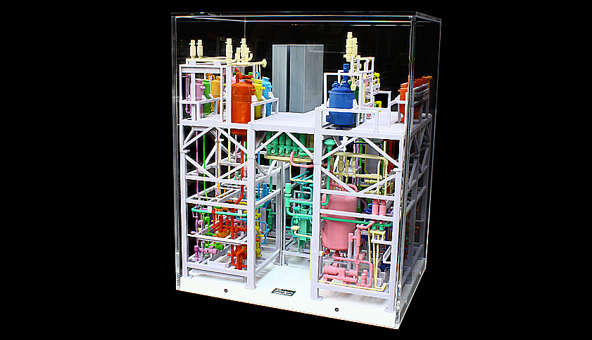Bristol-based Amalgam Modelmaking has once again gained their Cyber Essential Certification. After verification of their…
3D Printing: in with new, but not out with the old

We are booking tours of our workshop, starting 23 October and 6 November. If you are interested in 3D printing, call us on 0117 924 9596 or read on to register.
3D printing has had a broadly publicised impact on building design, due to a wider availability of larger volume printers. Architects are now predicting an exciting new phase where whole or part structures can be printed much faster than construction by traditional methods. Two of these newspaper stories feature our distinguished clients, Foster + Partners and Zaha Hadid.
Usually, we would be far more comfortable designing and making a bandwagon, rather than jumping on it. However we’ve learned some lessons with our beloved Objet 350 we thought worth sharing for more diverse companies in Bristol and the south-west who want to benefit.
Our experience 3D printing architectural models
Amalgam director Chris Conlon elaborates, “In any application, improved accuracy will save on materials and could be more environmentally friendly – demonstrated in the Chinese breakthrough of 3D-printing ten domestic units using recycled materials. Most obvious uses for 3D printing are architectural models for building design, new product prototyping and car manufacturing. Yet leading brand Nike has promoted new products incorporating 3D printed elements as luxury retail items. Here at Amalgam, we are testing further uses in animation, film props and exhibition displays. In layman’s terms, a printer with more layers gets you a finer object finish, and from tests with our printer, we’ve learned that:
- Advantages of the printer’s speed can only be realised after you’ve collaborated on the design: detailed CAD specifications will always print, flaws and all.
- It’s key to select an appropriate resin; under transport, models need the ability to withstand wear and tear; we’ve found one where clarity improves over time instead of deteriorating.
- 3D printing can complement other materials and methods within a single model. Sometimes it’s better to handmake or laser-cut and finish it together.
We love new technology in engineering and machinery, yet there is definitely still room in the workshop for the maker and his tools!”



